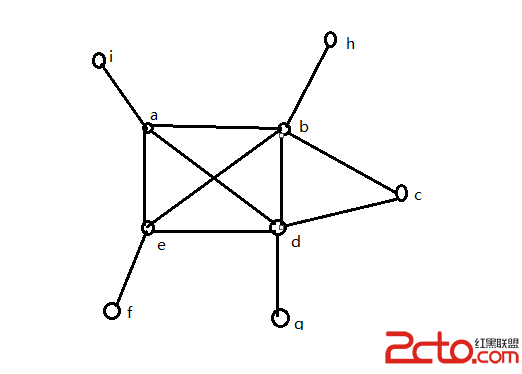lua源码剖析(一)
从lua.c的main函数开始,lua.c是一个stand-alone的解释器,编译完就是一个交互式命令行解释器,输入一段lua代码,然后执行并返回结果,也可以执行一个lua文件。
main:
/* call 'pmain' in protected mode */
lua_pushcfunction(L, &pmain);
lua_pushinteger(L, argc); /* 1st argument */
lua_pushlightuserdata(L, argv); /* 2nd argument */
status = lua_pcall(L, 2, 1, 0);
result = lua_toboolean(L, -1); /* get result */
main函数创建了lua_State之后就按照调用C导出给lua函数的方式调用了pmain函数。pmain函数中通过lua栈获取到命令行的argc和argv参数之后,对参数进行分析后,主要可以分为两个分支,一个处理交互命令行,一个处理文件。dotty出来交互命令行,handle_script处理lua文件。
handle_script:
status = luaL_loadfile(L, fname);
lua_insert(L, -(narg+1));
if (status == LUA_OK)
status = docall(L, narg, LUA_MULTRET);
else
lua_pop(L, narg);
在handle_script中先loadfile,然后docall。
loadfile会产生一个什么东西在栈上呢?写过lua的程序的人估计都会了解到下面这段lua代码:
local f = load(filename)
f()
load会将文件chunk编译成一个function,然后我们就可以对它调用。如果我们详细看lua文档的话,这个函数可以带有upvalues,也就是这个函数其实是一个闭包(closure)。按照我自己实现的那个粗糙的lua子集的方式的话,每个运行时期的可调用的lua函数都是闭包。
#define luaL_loadfile(L,f) luaL_loadfilex(L,f,NULL)
luaL_loadfilex:
if (filename == NULL) {
lua_pushliteral(L, "=stdin");
lf.f = stdin;
}
else {
lua_pushfstring(L, "@%s", filename);
lf.f = fopen(filename, "r");
if (lf.f == NULL) return errfile(L, "open", fnameindex);
}
if (skipcomment(&lf, &c)) /* read initial portion */
lf.buff[lf.n++] = '\n'; /* add line to correct line numbers */
if (c == LUA_SIGNATURE[0] && filename) { /* binary file? */
lf.f = freopen(filename, "rb", lf.f); /* reopen in binary mode */
if (lf.f == NULL) return errfile(L, "reopen", fnameindex);
skipcomment(&lf, &c); /* re-read initial portion */
}
if (c != EOF)
lf.buff[lf.n++] = c; /* 'c' is the first character of the stream */
status = lua_load(L, getF, &lf, lua_tostring(L, -1), mode);
luaL_loadfile是一个宏,实际是luaL_loadfilex函数,在luaL_loadfilex函数中,我们发现是通过调用lua_load函数实现,lua_load的函数原型是:
LUA_API int lua_load (lua_State *L, lua_Reader reader, void *data, const char *chunkname, const char *mode);
定义在lapi.c中,它接受一个lua_Reader的函数并把data作为这个reader的参数。在luaL_loadfilex函数中传给lua_load作为reader是一个static函数getF,getF通过fread读取文件。
lua_load:
ZIO z;
int status;
lua_lock(L);
if (!chunkname) chunkname = "?";
luaZ_init(L, &z, reader, data);
status = luaD_protectedparser(L, &z, chunkname, mode);
在函数lua_load中,又将lua_Reader和data通过luaZ_init函数把数据绑定到ZIO的结构中,ZIO是buffered streams。之后调用luaD_protectedparser,此函数定义在ldo.c中,在这个函数中,我们发现它使用了构造lua_Reader和data的方式构造了调用函数f_parser和它的数据SParser,并将它们传给luaD_pcall,luaD_pcall的功能是在protected模式下用SParser数据调用f_parser函数,因此我们只需追踪f_parser函数即可。
luaD_protectedparser:
status = luaD_pcall(L, f_parser, &p, savestack(L, L->top), L->errfunc);
f_parser:
if (c == LUA_SIGNATURE[0]) {
checkmode(L, p->mode, "binary");
cl = luaU_undump(L, p->z, &p->buff, p->name);
}
else {
checkmode(L, p->mode, "text");
cl = luaY_parser(L, p->z, &p->buff, &p->dyd, p->name, c);
}
f_parser通过数据头的signature来判断读取的数据是binary还是text的,如果是binary的数据,则调用luaU_undump来读取预编译好的lua chunks,如果是text数据,则调用luaY_parser来parse lua代码。我们发现luaU_undump和luaY_parser函数的返回值都是Closure *类型,这个刚好就和我们前面预计的一样,一个chunk load之后返回一个闭包。
进入luaY_parser函数后,就调用了一个static的mainfunc开始parse lua代码。
仔细回顾上面看过的函数,我们会发现每个C文件的导出函数都会使用lua开头,如果没有lua开头的函数都是static函数。并且我们会发现lua后的大写前缀可以标识这个函数所属的文件:
luaL_loadfile luaL_loadfilex L应该是library的意思,属于lauxlib
luaD_protectedparser luaD_pcall D是do的意思,属于ldo
luaU_undump U 是undump的意思,属于lundump
luaY_parser Y 是代表yacc的意思,lua的parser最早是用过yacc生成的,后来改成手写,名字也保留下来,属于lparser
其它的lua函数也都有这个规律。
作者:airtrack
补充:综合编程 , 其他综合 ,




